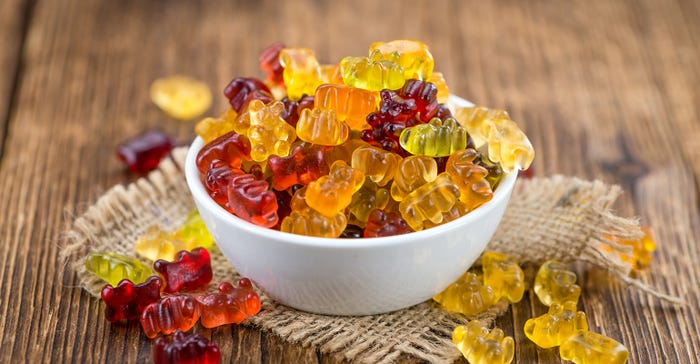Probiotics innovation: New science, new consumer targets
Innovations in biotics are flourishing, thanks to a confluence of supplier science and new ingredient discovery with probiotic strains and postbiotics, as well as consumer resonance. Here’s a glimpse into what’s going on in the ever-expanding category.

At a Glance
- Include with other sought-after ingredients.
- 'Microbiome' is the word du jour.
- What does the TikTok generation think?
Consumers just love their biotics. The good kinds. The kinds that keep them healthy, not the kinds they have to rely on to knock out a bad bug (albeit this is appreciated when needed).
Many people remember the refrigerated acidophilus, which primarily at that time (late 1990s) was like a single-lane road. Today, it is a thriving interstate of products, with subcategories creating their own lanes.
Emilie Puppinck, senior product manager at Gnosis by Lesaffre, concurred, “Probiotics are being combined with different ingredients like prebiotics, vitamins, minerals and plant extracts that offer additional health benefits. Biotics are also often fortified with vitamins or minerals, which allows for the use of health claims that are governed by regulations.”
Vaughn DuBow, global director of marketing for microbiome solutions at ADM, likewise observed that “biotics work well alongside highly sought-after ingredients, such as botanical extracts, vitamins and minerals, as well as plant proteins — targeting different attributes for well-rounded and tailored support.”
DuBow also noted “a convergence of food, beverage and dietary supplements, with novel wellness formats presenting in convenient and delicious delivery systems like gummies, snack clusters, chocolate squares, stick packs, beverage shots and more. As younger generations seek proactive and preventive wellness support, we’ll continue to see a move from traditional pills, tablets or capsules to more chewable or drinkable offerings.”
The mighty microbiome
Anchoring much of the biotic interest and development is research into the gut microbiome/gut-brain axis and its potential effects on stress, digestion and mental wellness.
Nutrition Business Journal’s inaugural “Microbiome Report 2022” asserted that “finished-product brands must increasingly look to more complex pre- and probiotic ‘synbiotic’ formulations.”
Microbiome-support products mainly comprise probiotics, prebiotics – or when combined, referred to as synbiotics – as well as fiber and digestive enzymes. Not surprisingly, the probiotic category dominates but is showing rather modest growth between 2017 and 2025e, per the NBJ report, projected to go from approximately $1.5 billion to $1.67 billion. Prebiotics, however, are zooming from $38 million to an approximate $210 million in the same time span. Synbiotics, too, are enjoying a rapid growth pace, from $518 million to an anticipated $1.36 billion.
Supplier science�
One example of a gut-support strain is Gnosis by Lesaffre’s ibSium (Saccharomyces cerevisiae CNCM-I-3856), a probiotic yeast shown to support overall intestinal comfort. In a clinical study, participants who supplemented with ibSium for eight weeks experienced a 26% reduction of abdominal pain score.
Puppinck noted ibSium “has shown consumer-approved, fast-acting support.” An unpublished study on more than 1,160 volunteers reported 96% satisfaction with gut comfort improvement after supplementing with the ingredient. Three out of four participants experienced positive effects on their digestive comfort within the first 15 days of consumption.
Comet Bio, which supplies the Arrabina brand prebiotic fiber, identified several key macro market trends that create opportunities for on-target innovations in the biotics field for foods, beverages and supplements.
The first is to home in on healthy weight management as an alternative to the Ozempic/Wegovy (semaglutide) trend – by 2030, approximately 9% of the U.S. population may be taking a semaglutide, according to data from J.P. Morgan.
For your formulator's, marketers and business exec's "toolbox for better business" as it relates to all things with probiotics, prebiotics, postbiotics and the larger microbiome opportunity, download the free Natural Products Insider digital magazine here.
A newer probiotic, Akkermansia muciniphila, could be a rising star in weight management; one study called it a “next-generation probiotic in modulating human metabolic homeostasis.” The brand marketer Pendulum formulated its Metabolic Daily with A. muciniphila and four other bacterial strains – positioning it as potentially helping metabolize sugars and carbs, as well as increasing efficiency of converting food into energy. Pendulum markets its product as a direct-to-consumer membership, and the product is endorsed by actress Halle Berry.
The TikTok generation
The rise of a new young adult generation is another macro market trend identified by Comet Bio. Generation Z (those born between 1997 and 2012) is expected to supplant Millennials as the largest consumer base by 2026. Members of this generation take naturally to a holistic wellness regimen and are keenly aware of mental well-being. According to insight from McCormick FONA, 72% of Gen Z consumers believe that healthy eating is an integral part of physical and mental health.
Unsurprisingly, according to an Insider Intelligence report, reaching this generation successfully involves the heavy use of social media (notably TikTok and Instagram), as 22.1% of them research health-related information on the platform all the time, compared to 9.7% of Millennials who consult social media all the time, and 6% of Generation Xers who do so.
The beverage brand Olipop – a carbonated drink blending prebiotics with plant fiber – presents trendy, upbeat videos on TikTok that relate as “lo-fi” user-generated (an emerging term for an authentic, minimally edited piece typically created by brand followers as opposed to a polished ad campaign). Rae is another brand resonating with Gen Z, and it relies heavily on influencer marketing. As of this writing, its Pre+Probiotic is sold out.
The play for women
A third macro market trend, according to Comet Bio, is women’s health across all life spans. NBJ’s “Women’s Health Report 2023” asserted that probiotic products will become more dominant for women’s health, especially those targeted to vaginal health.
Several such products include Lemme, whose Purr line of vaginal health probiotic gummies was founded by Kourtney Kardashian. The products are marketed “to support freshness.” Olly’s version is Happy Hoo-Ha, which is a “blend of multi-strain vag-friendly probiotics.” Not to be outdone in the insouciant nomenclature, Hum Nutrition’s Private Party contains probiotic strains blended with cranberry proanthocyanidins for both vaginal and urinary tract health.
In addition, biotics are becoming more important to women in products that address skin via the gut-skin axis. Paula Simpson, nutrition consultant and author of “Good Bacteria for Healthy Skin: Nurture Your Skin Microbiome with Pre- and Probiotics for Clear and Luminous Skin,” told NBJ that she predicts an explosion in the market for gut-skin-axis support products (i.e., probiotics shown to support skin health and appearance).
For example, Codeage Skin Probiotic+ blends probiotics and prebiotics with phytoceramides, vitamin C and several herbs and fruits for what it says is to “support gut health, skin complexion, hydration and overall skin health from within.”
What’s next?
Multi-biotic solutions are a rapidly growing area of interest for consumers, according to Puppinck. “We’re witnessing a new understanding of synergies within the entire biotic system (pre-, pro- and post-, including bacteria, yeast and phages) that will lead to a wider range of products providing specific benefits,” she commented.
If your brand is considering hopping onto the biotic highway, be encouraged, as it runs through enough fertile land to create your own ramp.
About the Author
You May Also Like





